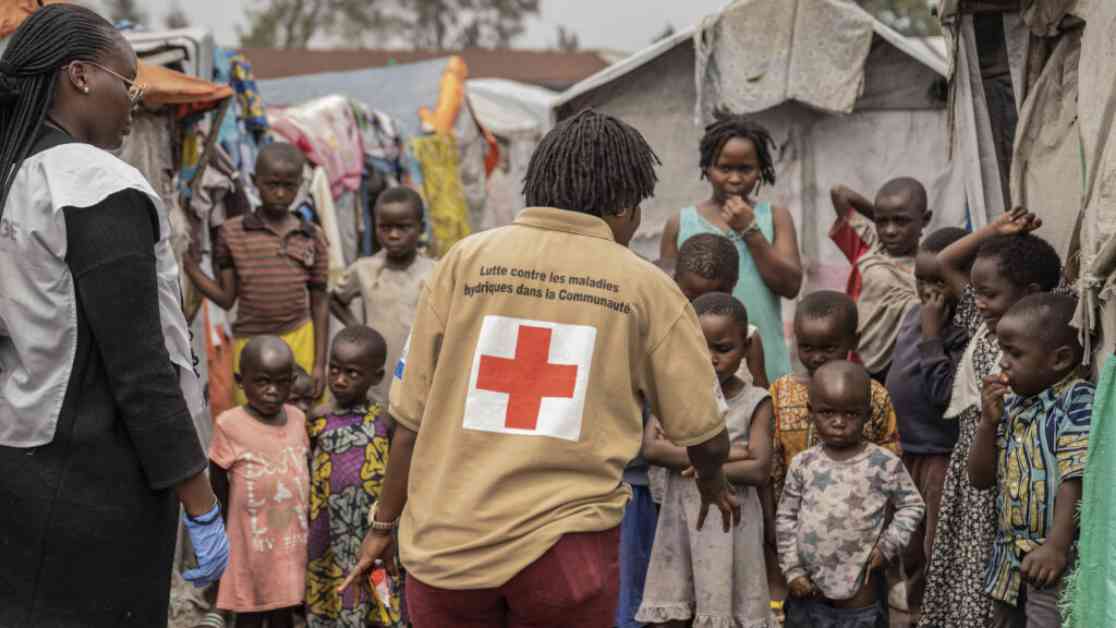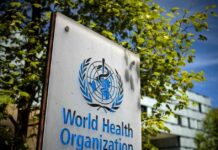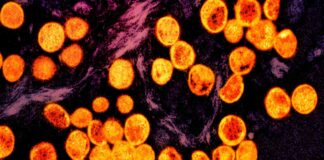The World Health Organization (WHO) has launched a comprehensive six-month plan aimed at halting the transmission of the MPOX virus in affected countries. The plan, which will be in effect from September through February of next year, focuses on enhancing surveillance, prevention, and response strategies to contain and control outbreaks of the virus. With an estimated funding requirement of $135 million, the WHO aims to improve access to vaccines, particularly in African nations that have been hit the hardest by the ongoing outbreak.
WHO Director-General Tedros Adhanom Ghebreyesus expressed confidence in the effectiveness of the plan, stating, “The MPOX outbreaks in the Democratic Republic of the Congo and neighboring countries can be controlled, and can be stopped.” The agency has committed to significantly increasing its staffing levels in affected countries to better manage and respond to the situation. In mid-August, the WHO declared the current MPOX outbreak a global health emergency, highlighting the urgency of the situation.
In a show of solidarity and support, the German government has announced that it will donate 100,000 doses of MPOX vaccine to affected countries from its military stocks. This generous contribution is aimed at bolstering vaccination efforts and curbing the spread of the virus in areas that are grappling with high case numbers. The international community’s coordinated response to the MPOX outbreak underscores the importance of global cooperation in addressing public health emergencies.
The Democratic Republic of the Congo, which has been the most severely impacted by the MPOX outbreak, reported over 1,000 new cases of the virus in a single week. This surge in cases has put immense strain on the country’s healthcare system and has highlighted the need for urgent intervention to contain the spread of the virus. The African Centers for Disease Control reported that as of Thursday, more than 21,300 suspected or confirmed cases of MPOX have been recorded across 12 African countries, resulting in 590 deaths.
MPOX, a virus belonging to the same family as smallpox, typically presents with milder symptoms such as fever, chills, and body aches. However, in more severe cases, individuals may develop lesions on their face, hands, chest, and genitals. The mode of transmission for MPOX primarily occurs through close skin-to-skin contact, including sexual intercourse, making it essential to implement stringent infection control measures to prevent further spread of the virus.
Enhancing Surveillance and Response Strategies
One of the key components of the WHO’s six-month plan is the ramping up of surveillance and response strategies to effectively monitor and mitigate the spread of the MPOX virus. By enhancing surveillance systems in affected countries, health authorities can quickly identify new cases, trace contacts, and implement targeted interventions to contain outbreaks. Additionally, the plan includes the deployment of rapid response teams to areas with high case numbers to provide immediate medical care and support to affected populations.
Furthermore, the WHO is working closely with national health authorities to strengthen laboratory capacity for diagnosing MPOX cases and conducting genetic sequencing to track the evolution of the virus. This data-driven approach enables health officials to better understand the transmission dynamics of the virus and tailor their response strategies accordingly. By leveraging cutting-edge technology and expertise, the WHO aims to improve the timeliness and accuracy of MPOX detection and response efforts, ultimately reducing the burden of the outbreak on healthcare systems.
Ensuring Fair Access to Vaccines
Ensuring equitable access to vaccines is a critical aspect of the WHO’s plan to halt the transmission of the MPOX virus. Vaccination is a proven and effective measure for preventing the spread of infectious diseases and reducing the severity of illness in those who become infected. However, disparities in vaccine distribution and access can hinder efforts to control outbreaks and protect vulnerable populations from the virus.
To address this challenge, the WHO is working with governments, international partners, and pharmaceutical companies to secure adequate supplies of MPOX vaccines and facilitate their distribution to countries in need. By prioritizing the most at-risk populations and ensuring that vaccines are available where they are most needed, the WHO aims to create a more equitable and sustainable immunization strategy to combat the MPOX outbreak. Additionally, the agency is advocating for increased funding and resources to support vaccination campaigns and strengthen healthcare infrastructure in affected countries.
Community Engagement and Risk Communication
Community engagement and risk communication play a vital role in building trust, dispelling misinformation, and encouraging adherence to public health guidelines during disease outbreaks. The WHO’s plan includes targeted efforts to engage with local communities, religious leaders, and other stakeholders to raise awareness about MPOX, its transmission routes, and the importance of vaccination. By fostering open communication and dialogue, health authorities can address concerns, dispel myths, and promote behavioral changes that can help prevent the spread of the virus.
Furthermore, the WHO is working with media outlets and communication channels to disseminate accurate and timely information about the MPOX outbreak, including updates on case numbers, prevention measures, and vaccination campaigns. By leveraging traditional and digital media platforms, the agency aims to reach a wide audience and empower individuals to take proactive steps to protect themselves and their communities from the virus. Through targeted risk communication strategies, the WHO seeks to build resilience, promote solidarity, and mobilize collective action to combat the MPOX outbreak effectively.
In conclusion, the WHO’s comprehensive six-month plan to halt the transmission of the MPOX virus represents a concerted effort to address the ongoing outbreak and prevent further spread of the virus in affected countries. By enhancing surveillance and response strategies, ensuring fair access to vaccines, and engaging with communities through risk communication, the WHO aims to contain the outbreak, save lives, and protect public health. As the international community rallies together to support affected countries and strengthen global health security, the WHO’s leadership and coordinated efforts offer hope for a brighter and healthier future for all.

















